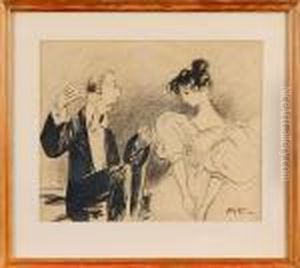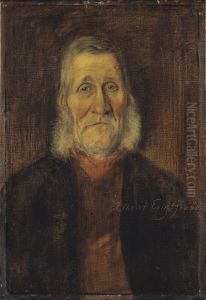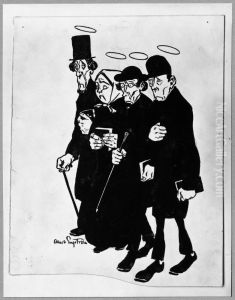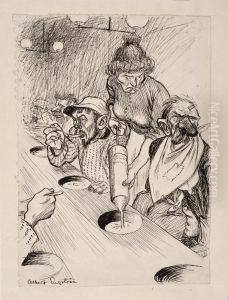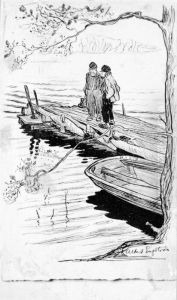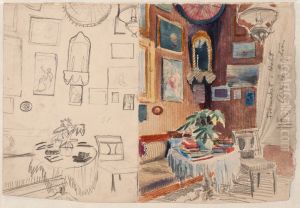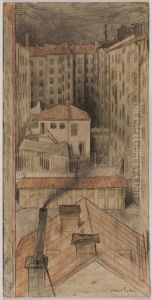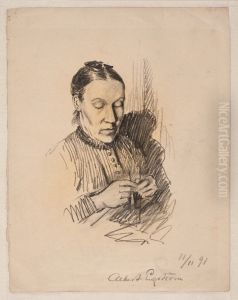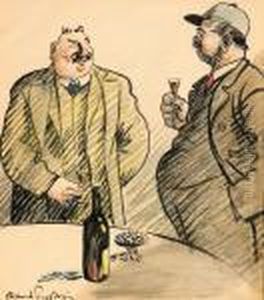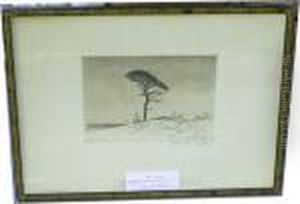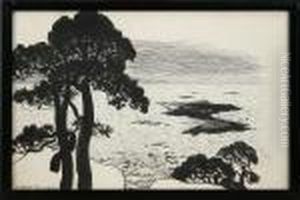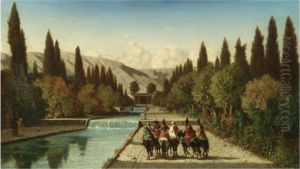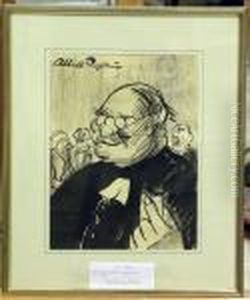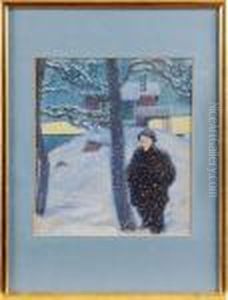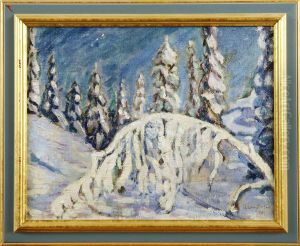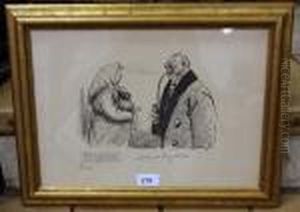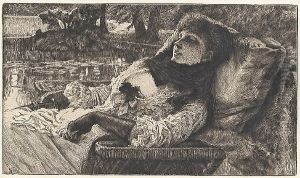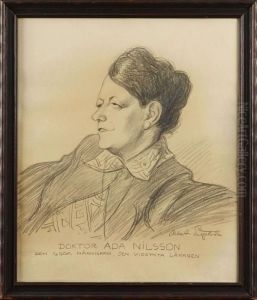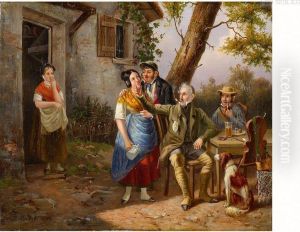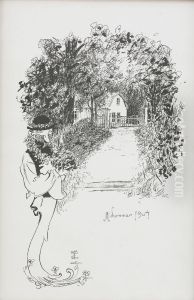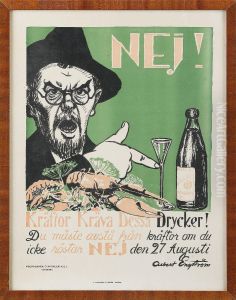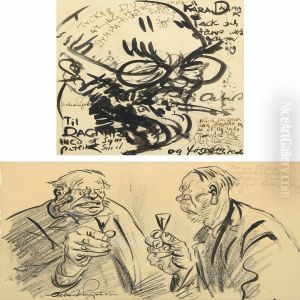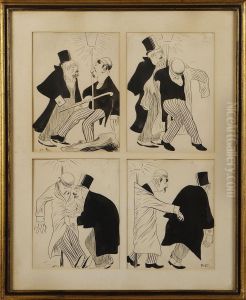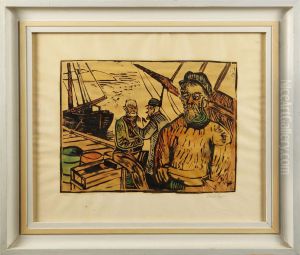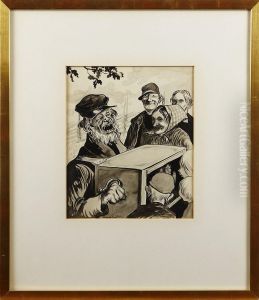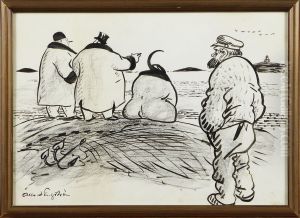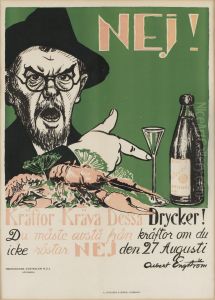Albert Engstrom Paintings
Albert Engström was a Swedish artist, author, and member of the Swedish Academy. Born on May 12, 1869, in Lönneberga, Sweden, Engström is particularly known for his contributions to Swedish literature and art, especially his humorous drawings and writings. His artistic career began after studying at the Valand School of Fine Arts in Gothenburg, and later at the Royal Swedish Academy of Arts in Stockholm. Engström's work often reflected his wit and satirical perspective, which gained him popularity among a wide audience.
Engström's art includes a wide range of caricatures, book illustrations, and paintings. He became well-known through his character 'Kolingen', a depiction of a humorous vagabond, which first appeared in the satirical magazine 'Söndags-Nisse' and later became a symbol in Swedish popular culture. Engström also contributed to several other periodicals, such as 'Strix' and 'Puck', where his caricatures were regularly featured. His illustrations were characterized by a playful and expressive line, which exemplified his ability to capture the essence of his subjects with simplicity and charm.
Beyond his work as an illustrator and cartoonist, Engström was also a prolific writer. He authored a number of essays and stories, many of which contained satirical and humorous commentary on society and politics. His literary works contributed to his reputation as a keen observer of human nature and the social issues of his time.
Albert Engström's cultural impact extended into the realms of academia and cultural institutions. In 1922, he was elected a member of the Swedish Academy, which is responsible for awarding the Nobel Prize in Literature. This honor highlighted his significance to Swedish culture and the appreciation of his peers for his literary and artistic achievements.
Engström's work remains influential in Sweden, and his legacy as an artist and author continues to be celebrated. He passed away on November 16, 1940, in Stockholm, but his contributions to the arts have ensured his place in Swedish cultural history.
